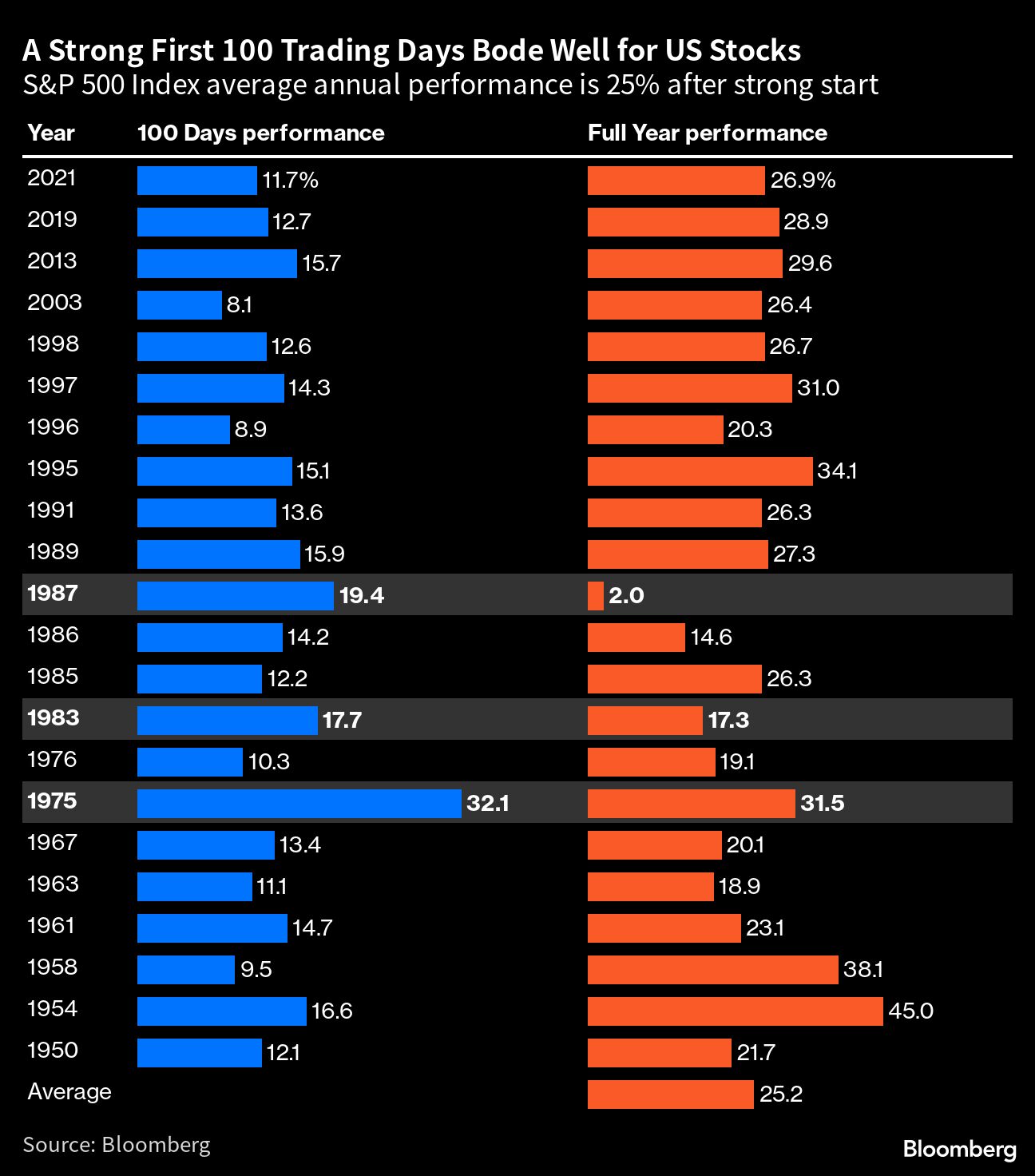A strong first 100 days for the S&P 500 Index almost always would lead to significant upside for the rest of the year, if history is any guide. 2023 is on track to follow that trend.
Gains of 8% or more during that initial period lead to average annual advances of 25% for the US benchmark index, according to data going back to 1950. The S&P 500 is already up 9.2% so far this year, with a few more days to go before reaching that milestone.

What’s more, only three times over the past 70 years has the index ended the year with gains less than those during the earlier part of the year.
“The bottom in pessimism is in, and by the time recession concerns have started rolling over, the low in equity markets is well in the rear view mirror,” says Great Hill Capital Chairman Thomas Hayes. He points to low leverage and low risk-taking among factors that suggest markets are nowhere near a top at this point.
BofA has raised its 2023 S&P 500 Index year-end target to 4,300 points, according to strategist Savita Subramanian, who says stock-market valuation currently suggests a 7-8% total return per annum over the next decade, far better than negative returns indicated at the start of 2022.
Risks to an upside scenario do remain, of course, as the inflation and rates cycle might not be fully completed yet and the standoff over the US debt ceiling could still derail the economic outlook.
This article was provided by Bloomberg News.








